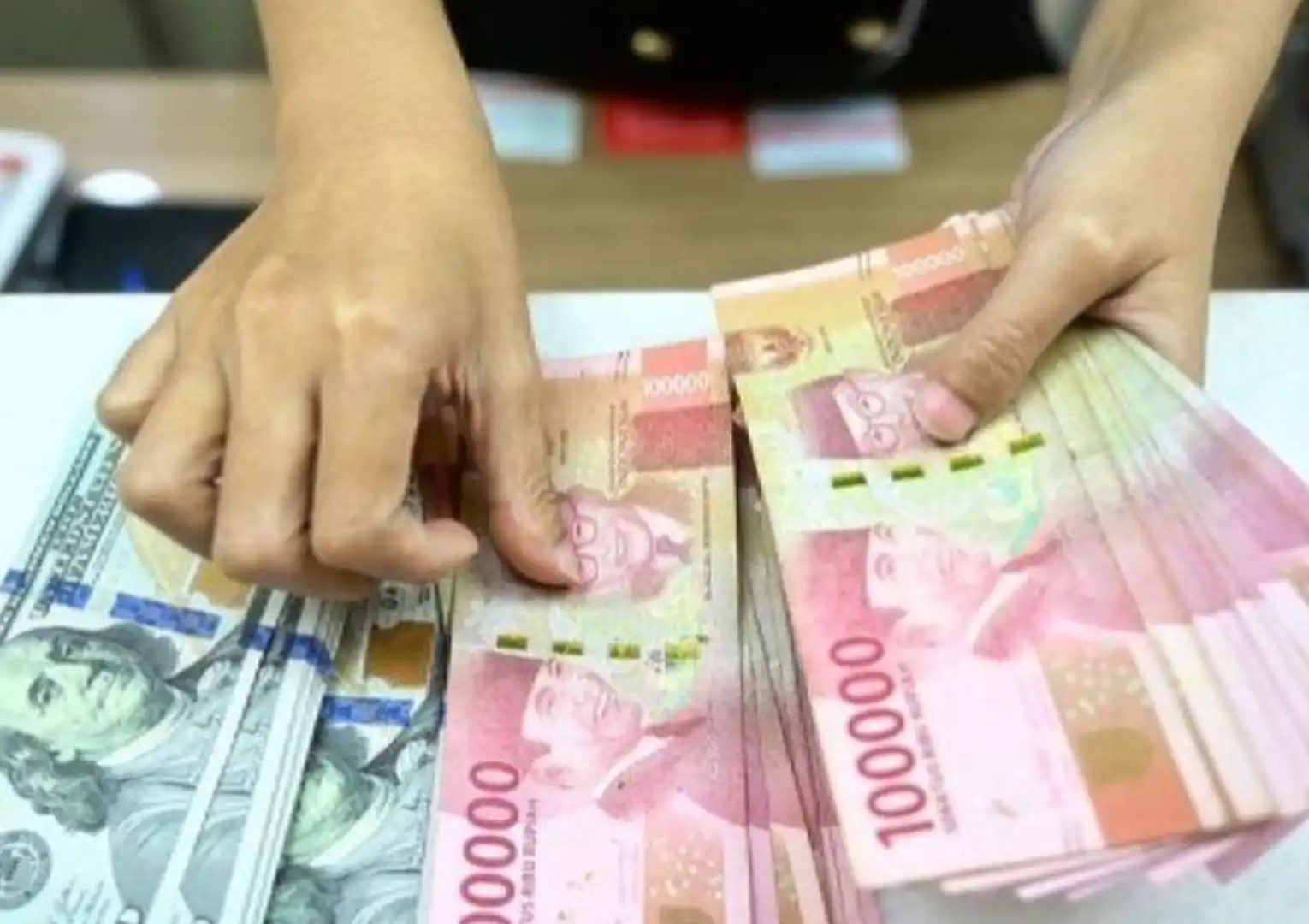Exchange Rates: Understanding Currency Values and Their Impact on Business
June 20, 2025
Bisnis
Share This Article

For some small business owners, the term exchange rate may sound like something relevant only to large-scale import-export companies. However, in today’s increasingly digital and globally connected business landscape, exchange rates are something that can no longer be ignored.
In addition to directly impacting operational costs, fluctuations in exchange rates also affect profit margins and overall business competitiveness. That’s why understanding exchange rates isn’t just about knowing today’s conversion rate — it’s also about reading trends, managing risks, and making strategic decisions.
In this article, Labamu will break down what exchange rates are and other key points you need to understand. Let’s dive in so you can be better prepared to navigate the dynamics of the global economy!
Understanding Exchange Rates
Simply put, an exchange rate is the value of one country's currency in relation to another's. For example, if 1 US dollar equals IDR 16,000, then the exchange rate of the rupiah against the dollar is IDR 16,000/USD.
However, behind this number lies a significant role in shaping the direction of the economy—both on a national scale and at the level of small and medium-sized enterprises (SMEs).
As explained by Investopedia, an exchange rate is not just a value between currencies—it also serves as a key indicator of a country's economic health.
Alongside interest rates and inflation levels, exchange rates have a strong influence on how international trade operates. This means currency fluctuations aren’t just the concern of central banks or multinational corporations—they also directly impact SMEs, especially those expanding into digital markets, operating globally, or using products and services priced in foreign currencies.
Therefore, understanding the concept of exchange rates and the factors that influence them isn’t just about economic literacy—it’s a smart business strategy.
Types of Exchange Rates Every SME Owner Should Understand
Now that you understand how exchange rates can significantly impact business activities, it's time to get to know the different types of exchange rates used in international trade and transactions. Here are some of the most common and relevant types for SMEs:
1. Selling Rate and Buying Rate
The selling rate is the rate set by a bank when it sells foreign currency to customers. The buying rate is the rate set by a bank when it buys foreign currency from customers.
For example, if you're purchasing products from abroad and need to pay in US dollars, the selling rate will apply. On the other hand, if you receive payments in dollars from overseas customers, the bank will use the buying rate.
2. Middle Rate
The middle rate (or mid-market rate) is the average of the buying and selling rates. This rate is often used by Bank Indonesia for reference and official publication purposes. While it’s not always used in actual transactions, the middle rate serves as a key indicator of the daily average exchange rate.
3. Spot Rate
The spot rate refers to the exchange rate applied to transactions that are settled immediately, typically within two working days.
This is relevant for SMEs that make direct international payments, such as for purchasing raw materials or production equipment from abroad.
4. Forward Rate
Unlike the spot rate, the forward rate is an exchange rate agreed upon today for a transaction that will occur at a future date. It’s used for hedging against currency fluctuations.
For instance, if you're about to sign a contract to buy raw materials from overseas six months from now, you can use a forward rate to protect against the risk of unfavorable exchange rate changes.
5. Fixed Rate and Floating Rate
A fixed exchange rate is set and maintained by the government at a certain level. A floating exchange rate, on the other hand, is determined by market forces—supply and demand in the foreign exchange market.
Currently, Indonesia adopts a managed floating exchange rate system, meaning Bank Indonesia allows the rate to float but may intervene if there is excessive volatility.
Factors That Influence Exchange Rate Fluctuations
Currency exchange rates can change daily—sometimes even hourly. These fluctuations are influenced by a variety of factors, but here are some of the most significant ones:
1. Inflation
Countries with low inflation rates tend to have stronger currencies. This is because purchasing power remains stable, making the economy more attractive to investors and market participants. Conversely, high inflation weakens a currency, as it erodes market confidence in the country's economic stability.
2. Interest Rates
High interest rates attract foreign investment by offering better returns. When investors convert foreign currencies into the local currency to invest, demand for that currency increases—leading to a rise in its value. On the other hand, low interest rates often result in a weaker exchange rate, as returns are less attractive.
3. Political and Economic Stability
Countries with stable governments and healthy economies usually enjoy stronger and more stable currencies. In contrast, political uncertainty or social unrest can drive capital out of the country, weakening the currency.
4. Trade Balance
A country's trade balance is the difference between the value of its exports and imports. A trade surplus (exporting more than importing) increases demand for the local currency, strengthening the exchange rate. Conversely, a trade deficit can put downward pressure on the currency due to increased demand for foreign currencies to pay for imports.
5. Foreign Debt
The higher a country's external debt, the greater its obligation to repay in foreign currency. This can lead to concerns about the country’s ability to meet its debt obligations, lowering investor confidence and negatively affecting the exchange rate.
6. Central Bank Intervention
Central banks, such as Bank Indonesia or the U.S. Federal Reserve, can intervene in the foreign exchange market to maintain currency stability. They may buy or sell specific currencies to influence exchange rates. Such interventions often occur when exchange rate volatility threatens national economic stability.
7. Market Speculation
Speculation happens when traders or investors try to predict the future direction of exchange rates and act accordingly. For example, if many speculators believe the rupiah will weaken soon, they may sell rupiah and buy dollars. This behavior can actually cause the rupiah to weaken—even if the country’s underlying economic conditions are stable.
Impact of Exchange Rate Fluctuations on SMEs
Currency fluctuations can significantly affect the operations and sustainability of small and medium enterprises (SMEs), especially those that have gone global or operate digitally. Here are some key impacts to be aware of:
1. Affects Operational Costs
If your business relies on imported raw materials or products, a weakening rupiah can increase purchasing costs. This also applies to software subscriptions, cross-border shipping, and payments to overseas vendors. These rising operational costs are often unavoidable and can strain your cash flow.
2. Impacts Profit Margins
When exchange rates shift and production costs rise, SMEs may not be able to immediately raise their selling prices. As a result, profit margins shrink. If left unaddressed, this can threaten business sustainability and hinder future planning.
3. Influences Competitiveness in International Trade
A weaker rupiah can benefit export-oriented SMEs by making their products more competitively priced in the global market. On the other hand, if the rupiah strengthens, local products may become more expensive abroad and lose out to international competitors. In other words, exchange rate changes can be either opportunities or challenges—depending on your business type.
4. Affects Selling Prices and Market Demand
When the rupiah weakens and production costs increase, SMEs may feel the need to raise prices. However, not all markets can absorb price hikes—especially during periods of weak consumer purchasing power. This can lead to decreased demand and threaten business continuity.
5. Complicates Financial and Investment Planning
Exchange rate volatility makes it harder to accurately forecast future expenses. This uncertainty complicates budgeting, pricing strategies, and expansion plans. As a result, SMEs may become more cautious or even postpone important investments.
How to Manage Constantly Changing Exchange Rates
For SMEs involved in import or export activities, exchange rate fluctuations are not just an economic term—they’re a business reality that must be managed. Here are several strategies to help navigate the ever-changing currency landscape:
1. Currency Conversion
If your business sends or receives payments in foreign currencies, managing the conversion process is crucial. You can consider converting currency at spot rates (though this often comes with additional fees), or using payment service providers that offer more competitive rates and lower fees. This helps reduce expenses and protect your profit margins.
2. Currency Hedging
Hedging is a risk management strategy designed to protect your business from unexpected exchange rate movements. For example, if you need to pay a foreign vendor in two months, you can use a forward contract to "lock in" the current rate and avoid the risk of a future increase. This makes budgeting more predictable and minimizes potential losses caused by currency fluctuations.
3. Currency Arbitrage
Arbitrage is a more advanced strategy that takes advantage of price differences for the same currency in different markets. For example, if the euro is priced lower in the Hong Kong market than in London, an arbitrageur could buy euros in Hong Kong and sell them in London for a profit. However, this strategy is complex, high-risk, and requires deep market knowledge and access to professional trading tools. While not a go-to strategy for most SMEs, it's still useful to understand the basic concept.
While exchange rate movements are beyond our control, that doesn’t mean SMEs can’t prepare for them. With the strategies above, you can make smarter decisions and protect your business from unnecessary risks.
Aside from choosing efficient payment methods and managing currency risks, it's also important to have the right tools to streamline your financial management, transactions, and business strategy.
Fortunately, Labamu is here to help—offering a complete, user-friendly business management solution. Download the Labamu app now on Google Play or the App Store, and take your business to the next level.














